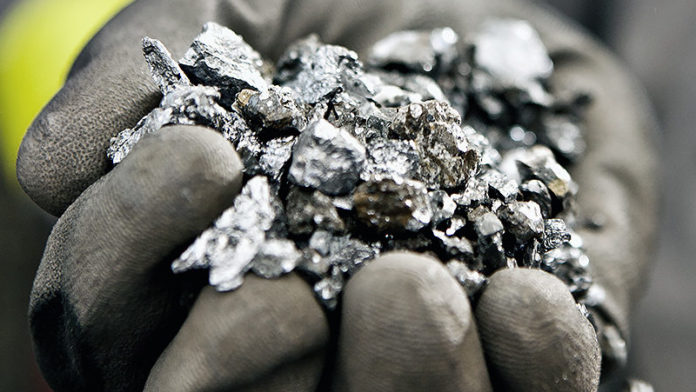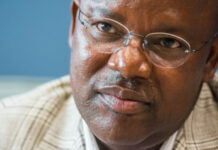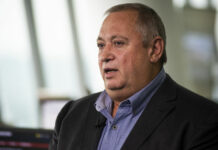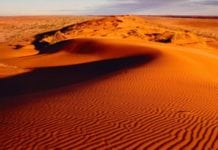
“BETTER late than never” was the sentiment from mining executives when the Department of Mineral Resources and Energy (DMRE) finally committed to July to select a technology provider for the long-waited mining cadastral The process to get a new cadastre in place has taken more than two years during which time South Africa has missed out on exploration by junior miners and investors who tried to obtain crucial information about mineral deposits.
The Minerals Council of South Africa recommended from the outset that the DMRE should opt for an off-the-shelf mining cadastre – a plug-and-play system that many other African countries are using. The DMRE initially insisted on its own custom-built system, but after a bungled tender process, it announced late in 2022 that it would consider similar “off-the-shelf” systems to what the country’s neighbours are using.
An open online electronic system for registering and managing prospecting and mining licences and other permits is important to regain investor confidence, said mining law firm Herbert Smith Freehills in a company note.
Around 60% of countries in Africa currently make use of cadastral systems to grant mineral rights and manage their mining sector, including Namibia, Ghana, Zambia, Uganda, Togo, Tanzania, South Sudan, Malawi, Mauritania, Liberia, Kenya, Guinea, Ethiopia, the Democratic Republic of Congo (DRC), Côte d’Ivoire, Cameroon and Mozambique.
“As these systems reduce human inputs by incorporating automated processes, they significantly enhance the reliability as well as the transparency of the mineral regulatory system itself,” said Herbert Smith Freehills.
Samrad’s (South African Mineral Resources Administration) deficiencies may have led to duplicate rights being issued on the same properties. For this reason, mining experts are concerned about possible legal challenges once the new system has been implemented.
I’m not saying our government is perfect, but we have it good in South Africa. Every mining jurisdiction in the world has its problems: in Canada there’s a plethora of environmental hurdles, in Australia the cost of mining is high – Jan Nelson
Says Errol Smart, CEO of junior miner Orion and chairperson of the Junior and Emerging Miners Leadership Forum: “It’s all fine and well to have a cadastre, but you’ll have to make sure that you have trained staff and that there are desktops and laptops and servers and reliable operators.”
If the DMRE opts for “the right system”, Smart says, a cadastral operator can be trained in a matter of months, if not weeks. “And depending on the system, a large mining company would be able to download their spatial data and pre-populate most of the information that a cadastral system would require. That will probably take care of the 80/20-rule. For 80% of the active prospecting rights there is spatial data that can be downloaded, but the information then needs to be audited. The remaining 20% is the problem – the thousands of outstanding applications.”
Smart is of the view that so many mining right and prospecting applications are outstanding because there are conflicts, such as historical approvals. “Rights that shouldn’t have been granted, applications that have been accepted which shouldn’t have been, because they’re impeding on someone else’s rights.”
A cadastral system is in essence a binary system, says Smart. “It’s a ‘yes’ or a ‘no’ [with regard to applications] and there’s no room for grey areas. But this is precisely what’s happened over the last 20 years or so – grey areas that will have to be resolved.”
Smart notes that once the new cadastre is in place the DMRE will most likely need to establish a tribunal to rule on duplicated and contested mining and prospecting rights. “There’ll have to be an independent judge who will have to apply the wisdom of Solomon. Our courts will probably be overloaded and some of these babies will have to be cut in half.”
Flaws in the act
Smart says the DMRE has also allowed so-called over-pegging through the years: “Existing mining companies find out that somebody’s been granted a right on their property to mine something like sand or another obscure mineral and it’s creating huge problems.”
Jonathan Veeran, partner and head of mining at Webber Wentzel, says there is a weakness in the Minerals and Petroleum Resources Development Act (MPRDA), which allows for more than one operator on a single site. “There’s a table of minerals attached to the MPRDA, and you need to be very specific about the minerals you’re going to drill for.
“The problem comes in when you haven’t covered all the minerals [in your application] that you intend to extract in one process. It has happened that a politically connected third party says: ‘You missed out on a mineral, but I know you’re extracting’ and then applies for a prospecting or mining right for those additional minerals [that were not on the original application],” says Veeran.
There’ll have to be an independent judge to apply the wisdom of Solomon. Our courts will probably be overloaded and some of these babies will have to be cut in half – Errol Smart
In his view, this dilemma needs to be “cured legally”. “The MPRDA should say any mineral mined in association with other minerals [for which an application was granted] belongs to the extractor. Because you can’t have two operators on the same site.”
Smart agrees: “It’s physically impossible and it creates safety and health and environmental problems if there are two people on the same property at the same time. The DMRE will have to stand up and take a resolution on how they’re going to deal with this. Because the one day you’re mining and suddenly another company turns up on the property with machines.”
He hopes the MPRDA will be amended so that exploration and mining rights are automatically granted for all available minerals on a particular site. “This will help rights holders to get maximum impact on their exploration opportunity.”
One mining executive who isn’t too fazed
about the existence of a mining cadastre – in whichever form – is Jan Nelson, CEO of junior miner Copper360.
“I am a miner, not an explorer. I get that it’s important for explorers to know where they need to look for minerals. But I have my permit. I’m not looking for copper. I know where to mine.”
Nelson’s experience in the mining sector spans a period of 20 years, but one of his career highlights is undoubtedly the listing of Copper360 on the Johannesburg Stock Exchange’s Alt-X Board in April this year. The company raised R152m through a private placing at 400c a share. “We got our licence in October last year without any hassles.”
Nelson has little sympathy for South Africa’s mining executives “who are quick to complain but slow with coming up with solutions”.
“I’m not saying our government is perfect, but we have it good in South Africa. Every mining jurisdiction in the world has its problems: in Canada there’s a plethora of environmental hurdles, in Australia the cost of mining is high. In the DRC you need to pay people to do the most basic stuff for you. Here in South Africa, we have a sound legal and banking system and existing infrastructure.”
According to Nelson, the industry is too focused on looking for ore bodies. “The explorers complain about everything. South Africa has been thoroughly explored. Maybe we should stop looking. We know where the mines are. Just start mining.”
This article first appeared in the The Mining Yearbook 2023 available here.










